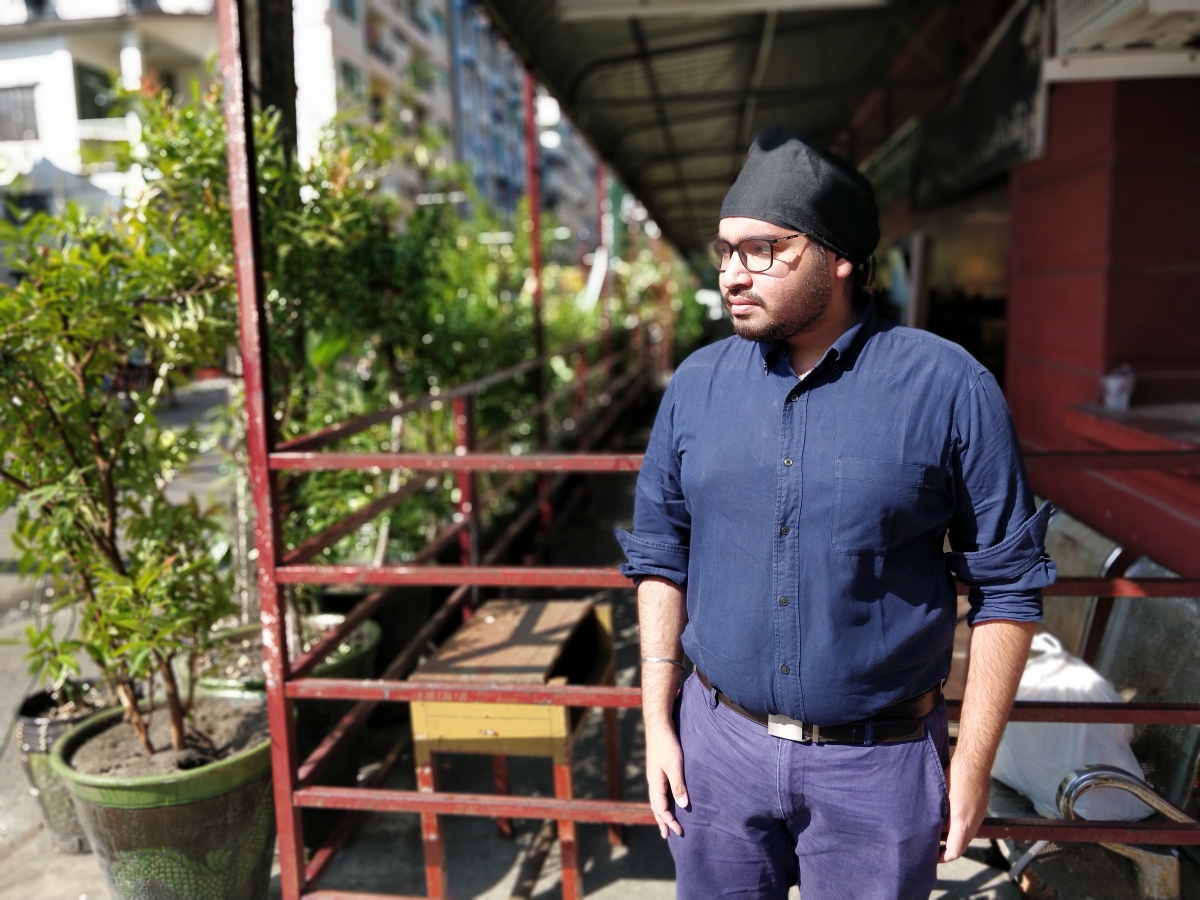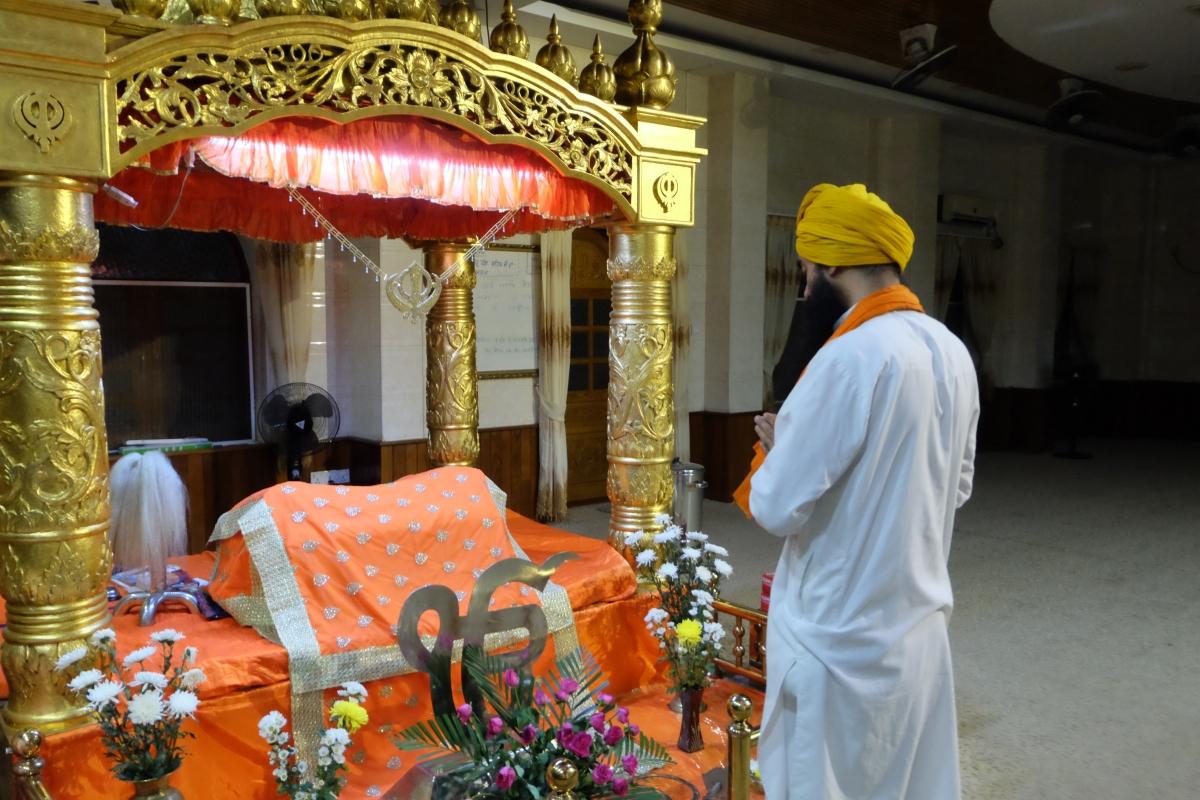
Between a Hindu temple and a Salvation Army church sits a four-storey-high school in downtown Yangon. Its foundation stone bears the name of Dr Randhir Singh, the Sikh who founded it on 24 February 1934.
The school was established at a time when anti-Indian sentiment was already brewing in Yangon, then known as Rangoon, the nation’s capital. But within three decades, covering the Second World War to the Burmese military coup in 1962 that established military rule, many Punjab students were forced to leave the country.
Fast forward to 2018: one Sikh boy sat among the Buddhist students, a sole representative of the school’s original faith. A new head teacher, who was apparently unfamiliar with the Sikh religion, gave the student an ultimatum: either the turban goes or you do. The young boy was eventually allowed to wear his turban, but the teacher was never held accountable for the discriminatory behaviour.
That episode in the classroom may be indicative of a once-flourishing community, eventually beaten down to obscurity. But most Sikhs at a nearby temple, or gurdwara, would disagree. Their modest numbers are growing, worshippers tell New Naratif. The new generation is unafraid to grapple with a biased system. They are winning small victories for equality here and there, such as the freedom to express their religion in certain spaces, while also obtaining smaller bureaucratic reforms.
The Sikh student’s brother, Zay Linn Mon, 23, is one of those rare people in Myanmar who openly calls for justice for the country’s persecuted Rohingya Muslims.
A climate and rights activist, he, as well as his mother, explained to the brother’s headmaster that the turban is not a taqiyah (a Muslim prayer cap), and that Sikhism and Islam are two different religions, the latter of which is vilified by Buddhist extremists.
“I feel guilty saying that,” said Zay Linn Mon. “It’s not the teachings of the Sikh people to throw another community under the bus.”
But for him, the problem runs deeper than pitched battles for wearing a turban. Whether it is in a government identification photo or a school, it all boils down to Islamophobia, he says.
“Some authorities mistake us with Muslims, others know who we are, but [think that] if Sikhs are given favourable treatment, Muslims will also ask for the same,” he says. “And that’s something the authorities definitely do not want.”
Sikhism is a Dharmic faith that does not proselytise, which is perhaps why it has survived waves of external threats in Myanmar. When it originated more than 550 years ago in northern India, the faith’s rejection of the Hindu caste system and message of gender equality were revolutionary.
How did the Sikhs come to Myanmar?
In the late 1800s, Sikh military police arrived as part of the colonial forces in Burma and established gurdwaras across the country—often in strategic places that required a military presence.
The soldiers were part of a huge influx of Indian migrants, among them labourers, money lenders, civil servants, traders and farmers who joined a growing economy after Lower Burma was annexed by the British in 1852 and constituted as a province of British India a decade later.
The number of Indians in the Irrawaddy Delta rose from 37,500 in 1872 to 297,000 in 1901—7% of the total population—with over 86% of the community born outside Burma.
Despite being the biggest province of the British Raj geographically, Burma had a population of 9 million in 1901, while neighbouring province Bengal had eight times as many people.
This major shift in demographics stoked ethnonationalism among the Buddhist Bamar, the dominant ethnic group in Burma, who feared that Indians would replace them in their own homeland. Violence and riots grew against migrants, pushing the British to separate Burma from India in 1937.
Five years later, the Second World War reached Burma in the form of an invading Imperial Japanese Army, self-proclaimed liberators from British colonialism. Many Sikhs retreated to India, and, although the British would retake Burma in 1945, the country became officially independent in 1948.
But ethnic minorities, along with communists, argued that power was not fairly shared. This led to insurgencies against the government in civil wars that still rage to this day.
The Burmese military saw this resistance as a reason to overthrow the democratically elected government in 1962 and present itself as the only path to peace and order.
With military rule came nationalisation, which the military saw as an effort to reduce foreign influence and consolidate the junta’s control. Indian-origin people lost their businesses and livelihoods overnight and were deprived of full citizenship. At least 300,000 fled Burma. Throughout this strife, the Sikh population in the country dropped from nearly 11,000 in the 1931 census to about 3,000 today.
Naseeb Singh, a 79-year-old Sikh in Yangon, says the real number is likely higher, but no one really knows for sure. In any case, the community is dwarfed in size by Myanmar’s Buddhist, Hindu, Muslim and Christian populations. Approximately 30 gurdwaras remain, some almost derelict, served by one or two families. These gurdwaras are spread across the country, even though the Sikh community is mostly based in cities such as Yangon, Mandalay and Myitkyina, capital of the northern Kachin State.
Despite living in Burma for generations, many Sikhs suddenly found themselves downgraded to second-class citizens under the 1982 Burma Citizenship Law, which reserved full citizenship for “national races”—those who settled in Burma before 1823 and before the first British annexation of its territory.
The law also recognised “associate citizens” who can apply for citizenship under a 1948 law. Associate citizens can earn income, but cannot own land, work for foreign firms or stand for any elected office. A third tier, naturalised citizenship is for people who can provide “conclusive evidence” of their entry into Burma and residence before 1948.
Who gained citizenship was often left to officials’ discretion. Meanwhile, people of Indian, Chinese or Nepalese origin were blocked from entering professions such as medicine, law and engineering.
Young Sikhs confront an old system
Jind Kaur, a Mandalay-based Sikh in her 50s, and a long-time worker in the NGO sector, says that while marginalising policies may have been enacted to save the government from investing in people who they think might eventually leave the country (since they were not seen as full citizens), these moves knocked the confidence out of older Sikhs.
“They didn’t want confrontation with the authorities,” she says. “They dare not claim their rights. Now the young generation is brilliant, the way they speak, they are very confident.”
Younger Sikhs tend to be more outspoken than their elders, Jind says. Zay Linn Mon, for instance, takes part in climate protests in the country. But they also confront other challenges, such as being banned during exams for wearing a turban—an important symbol of commitment to the religion. According to Jind, government officials have claimed that it’s difficult to tell turbaned students apart.
“We need to advocate to the government how the turban is valuable from the Sikh religion’s perspective,” she says.
Progress has been made on other fronts, such as the lifting of an unofficial ban on wearing turbans in government identification photos, a feat accomplished with the help of the Indian Embassy and Sikh leaders advocating to influential politicians, says Zay Linn Mon.
In 2014, immigration officials rejected his passport photo because he was wearing a turban. “But fortunately, the head of the passport office is a friend of my father so we could talk,” he says. “Even in small cities you can’t get an identification card or high school graduate certificate with the turban.”
While no written rule or law exists in Myanmar that explicitly bans turbans in identification documents, there is still a pervasive assumption among officials that it is not allowed. It’s an unspoken bureaucratic practice that has a very tangible impact on Myanmar’s Sikhs and their experience living and working in the country.
Harbin Singh, a 19-year-old air-conditioning maintenance worker, wants to become a police officer like his great-grandfather, but obstacles have been strewn in his path.
“In other countries such as Thailand and Malaysia I could join the police force,” he says. “I am not happy in this country; Myanmar police do not wear turbans.”
Yet in 2019, the passport photo process was much easier for Zay Linn Mon, who suspects it had something to do with the predominantly Buddhist government seeking the support of community leaders in the midst of the Rohingya crisis.
Zay Linn Mon is still no stranger to online racism. He is constantly labeled “kalar”, a racial slur used to describe descendants of Indians. Once, when he was interviewed as the president of youth dialogue and development support group Yangon Youth Network, a user commented on Facebook: “Why has he become president? Have all the Buddhists in the network died?”
“I face discrimination not because of Sikhism, but because I am Indian, the same for Hindus and Muslim people,” he says.
Zay Linn Mon says some Sikhs label themselves as “Buddhist” on their identification cards to avoid unwanted attention, though he wishes the community would engage more in wider society.
'Who are you? Where do you come from?'
Although the religion fundamentally opposes a caste system, Jind Kaur says classist elements exist within Sikhism in parts of the country. But as an outsider, there are few warmer experiences than visiting Yangon’s main gurdwara on a Sunday. Dozens of families laugh and joke with each other as the greeting “sat sri akaal” or “god is truth” travels around the room.
Downstairs, a rotating cast of volunteers serve roti, rice, vegetables and pea curry in a langar, a free communal meal eaten on the floor and open to everybody.
The temple was established in 1899, says 25-year-old telecoms worker Mandeep Singh in a sun-drenched courtyard.
Naseeb, the 79-year-old Sikh, plays down any claims of discrimination.
Wearing a stylish burgundy turban, a chequered shirt and sunglasses from which wiry eyebrows emerged, he sat in the temple’s office under a khanda, the Sikh symbol of two swords.
“No one is a king or a beggar here,” the former rail traffic controller says in praise of Sikhism’s egalitarian strain.
But Sikhs sometimes face discrimination in Myanmar society, Mandeep Singh interjects. Take Buddhism’s most holy site in Myanmar, Shwedagon Pagoda, he adds, saying that security officers often grill him on his nationality and motive for visiting. “They would ask, ‘who are you? Where do you come from? Why do you come to this temple?’”
It doesn’t ruffle the older man. “It is his right to ask questions,” Nasseb Singh says. “If you can answer properly, there will be no problem.”
This exchange highlights the generation gap that Jind Kaur has pointed to; while the older generation has sought to accommodate, younger Sikhs are unwilling to accept discrimination and racial profiling as just a fact of life in Myanmar.
Some think the best path forward is to celebrate their heritage while engaging with wider society.
During the floods in southern Myanmar in July 2015, five Sikh friends started the Myanmar Young Sikh Aid. A co-founder, Sunil, says that the group has since provided emergency relief for multiple natural disasters in the country.
In December 2019, Mandeep Singh helped start the Myanmar Sikh Motorcycle Club, whose 24 young members ride across the country for holy celebrations and to promote the Punjab language.
That same month, university student Himmat Singh, 18, and his friends relaunched the Mandalay Sikh Youths, which holds a summer school that teaches students about Sikh history and the faith’s holy book, the Guru Granth Sahib.
“Nowadays Myanmar is starting to develop into a democracy,” Himmat says, referencing the country’s slow, ongoing transition to a civilian government (25 percent of seats in both houses of Myanmar’s parliament are appointed by the military).
“The Sikh youth is becoming more united and involved in society,” he adds. “We have many opportunities to develop our religion too.”


